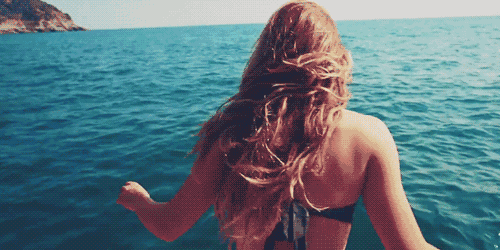用這個方便的游泳辭彙表刷上你的泳池對話
在底部,我們將在3點下降5 x 200,甚至可以全速下降3:1。
如果上面的句子沒有意義,那麼您可能需要時間來練習游泳辭彙。無論您是大師級游泳運動員還是周末單兵訓練,如果您遇到需要它的情況(您知道,雞尾酒會,誰想要成為百萬富翁,或只是簡單地了解游泳術語使用Active的游泳頁面)。
接下來是如果您冒險進入游泳池甲板並感覺需要融入,可以輕鬆列印,張貼或記憶的術語簡短列表!
50:一般指50碼或米,這是短跑運動員和耐力運動員的常見重複距離。
100:一個50的長度的兩倍,和一個普通的步速。
500:500碼或米,這是許多耐力訓練中常見的較長距離(相當於0.33英里)。
短程:25米/碼池四個長度(或兩圈)等於100米/碼。
長程:50米長的泳池,兩條長度或一圈等於100米。也被稱為奧運距離。在庭院格式中不存在。
長度:在任何給定泳池中在一個方向上遊動的距離。
Lap:距離在任何給定的泳池中回升。
設置:組成訓練或訓練的一部分距離的一組; 5 x 100是500米長的一套; 500,400,300,200,100是1500米長的一組。
時間間隔:完成某個演練的時間。 100米兩點間隔意味著如果你能在1:40分鐘內游到100米,那麼在重複下一個之前,你將有20秒的休息時間。
重複:一組的組成部分; 5 x 100是一組100個重複。
閾值:在高度有氧運動中,對於給定距離,您可以持續或重複的最長時間。
速度:每次重複的時間可以在一組中持續保持不變,理想情況下比賽中您可以保持的時間(例如每100米)。
負分裂:比上半場更快完成一個設定距離後半段的動作。
甚至分裂:以相等的速度完成設定距離的前半部分和後半部分的動作。
降序:在設定的距離內增加一個人的速度(她正在下降她的一英里賽跑100米)。
在最上方:在池畔步速時鐘的12點(或60秒)標記處開始一組。
在底部:在一個節奏時鐘的6點(或30秒)標記處開始一組。
逐漸減少:在特定比賽之前的幾周或幾天內,減少訓練(長度和強度)。
全部裝備:在拉式裝置中同時穿著的所有牽引設備(浮標,管,槳)。獲得上身游泳鍛煉的最佳方式。
浮標:用於穩定腿部並在水中正確位置的漂浮裝置。
管:一個小輪子的基本內管,用於在穿著拉浮標時綁定腳踝;防止踢腿,並有助於保持雙腿在一起(和浮標滑倒)。
槳:塑料手盤用於最大化上身拉動鍛煉。有幾種形狀和尺寸可供選擇,具體取決於您的技能和偏好。
Dragsuit:一條寬鬆的尼龍男女皆宜的泳裝,穿在普通的練習服上,增加了對日常訓練的抵抗力。
樂隊訓練:使用橡膠彈力線進行旱地鍛煉,以加強所有四次擊球所用的肌肉。
缺氧訓練:以呼吸模式為訓練焦點的任何類型的訓練。
更多:3鍛煉,以提高你的游泳
3:1:呼吸模式,每三次呼吸一次;這是一種雙側呼吸模式(你在左右兩側呼吸)。
2:1:呼吸模式,每兩次呼吸一次(只在一側呼吸,左側或右側呼吸)。
圈圈游泳:按標準逆時針方向在泳道中游泳,向右和向左。當不止一個人分享你的車道時,最好。
追趕行程(Catch-up stroke):在基本爬行(自由式)被改變的特殊鑽頭,以便每個手臂在完成下一個行程之前趕上另一個手臂(一個手臂在頭部上方靜止,在開始行程位置,而另一個手臂完成一個完整衝程旋轉)。
刮擦:特殊的鑽頭只用你的雙手(不是你的手臂)在水中匆匆而過;手臂在你的身邊,手腕以揮舞的動作來回擺動(旨在培養對水的感覺)。當游泳圈不是一個選項時,很好的鍛煉(酒店游泳池,擁擠的慢車道)。
垂直踢:在深水中執行的特殊鑽(潛水井和酒店泳池深處,當無法進行單圈游泳時),在垂直位置雙手交叉胸部或在頭上延伸不同間隔/組。
On the bottom, we’re going to descend 5 x 200 at 3:00, even split, 3:1 with full gear.
If the above sentence makes no sense, it may be time for you to brush up on your swimming vocabulary. Regardless of whether you are a Masters swimmer or a weekend warrior who trains alone, it is helpful to familiarize yourself with swimming lingo should you come across a situation that requires it (you know, cocktail parties, Who Wants to Be a Millionaire, or simply using Active’s Swimming page).
What follows is a brief list of terms that can handily be printed, posted, or memorized should you venture onto a pool deck and feel the need to blend in!
50: generally refers to 50 yards or meters, a common repeat distance for sprinters and endurance athletes alike.
100: twice the length of a 50, and a common pace distance.
500: 500 yards or meters, this is a longer distance common in many endurance workouts (equivalent to 0.33 of a mile).
Short course: a 25-meter/yard pool where four lengths (or two laps) equal 100 meters/yards.
Long course: a 50-meter pool where two lengths or one lap equals 100 meters. Also referred to as Olympic distance. Nonexistent in yard format.
Length: distance swum in one direction in any given pool.
Lap: distance swum up and back in any given pool.
Set: a grouping of distances composing part of a workout or drill; 5 x 100 is a set that is 500 meters long; 500, 400, 300, 200, 100 is a set that is 1,500 meters long.
Interval: the time given to complete a certain drill. A 2:00 interval for 100 meters means that if you can swim 100 meters in 1:40 minutes, you will have 20 seconds of rest before repeating the next one.
Repeats: the components of a set; 5 x 100 is a set of 100 repeats.
Threshold: the maximum time you can hold, or repeat, for a given distance during a highly aerobic set.
Pace: the time per repeat you can hold consistently during a set, and ideally the time (per 100 meters, for instance) that you can hold during a race.
Negative splitting: the act of completing the second half of a set distance faster than the first half.
Even splitting: the act of completing both the first half and last half of a set distance at equal speeds.
Descending: increasing one’s speed incrementally during a set distance (She is descending her one-mile race by 100 meters).
On the top: starting a set on the 12 o’clock (or 60-second) mark on a poolside pace clock.
On the bottom: starting a set on the 6 o’clock (or 30-second) mark on a pace clock.
Tapering: the act of paring down your workouts (in length and intensity) for the weeks or days leading up to a specific race.
Full gear: all pulling equipment (buoy, tube, paddles) worn simultaneously during a pull set. The best way to get an upper-body swim workout.
Buoy: flotation device used to stabilize the legs and correct body position in the water.
Tube: a basic inner-tube from a small wheel used to bind your ankles while wearing a pull buoy; prevents kicking and helps keep legs together (and buoy from slipping).
Paddles: plastic hand-disks used to maximize an upper-body pulling workout. Available in several shapes and sizes, depending on your skill and preference.
Dragsuit: a baggy, nylon unisex swimsuit, worn over a regular practice suit to add resistance to everyday training.
Band training: dry-land workout using rubber stretch cords to strengthen muscles used in all four strokes.
Hypoxic training: any type of set where a breathing pattern is the focal point of the drill.
More: 3 Workouts to Improve Your Swim
3:1: Breathing pattern where you take one breath for every three strokes; this is a bilateral breathing pattern (you breathe on both left and right sides).
2:1: Breathing pattern where you breathe once for every two strokes (you only breathe on one side, your left or right).
Circle swimming: swimming in a lane in a standard counter-clockwise direction, up the right side and back down the left. Preferable when more than one person is sharing your lane.
Catch-up stroke: special drill where basic crawl (freestyle) is altered so that each arm catches up with the other before completing the next stroke (one arm is stationary above your head, in beginning-stroke position, while the other completes a full stroke rotation).
Sculling: special drill using only your hands (not your arms) to scull your way through the water; arms at your sides, with your wrists whipping back and forth in a waving motion (designed to develop feel for the water). Good workout when lap swimming is not an option (hotel pools, crowded slow lanes).
Vertical kicking: special drill executed in deep water (diving wells and deep ends of hotel pools when lap swimming is not an option) where one kicks in a vertical position with arms crossed over chest, or extended above head for various intervals/sets.
